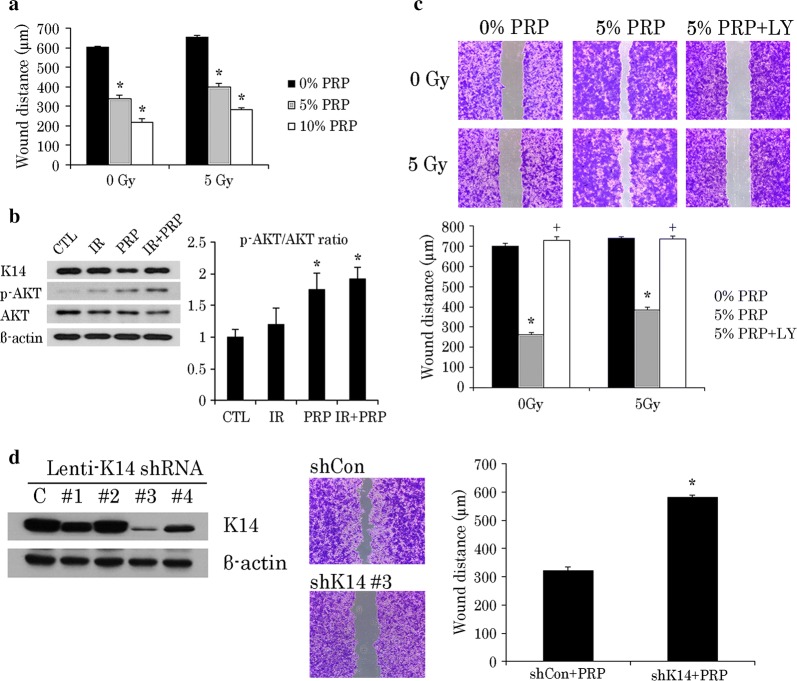Fig. 2.
PRP promotes wound healing of irradiated HaCaT cells via AKT signaling. a Comparative wound-healing capacity of HaCaT cells at different doses of PRP with or without IR, using scratch-simulated wound migration assay. Result of one experiment performed in triplicate and expressed as mean ± SEM (Student’s t-test applied) *p < 0.05 vs. 0% PRP group. b Western blot analysis of K14, p-AKT, and AKT expression levels in 5 Gy irradiated HaCaT cells incubated with 5% PRP for 24 h. Quantification of p-AKT/ATK ratio expressed as mean ± SEM (Student’s t-test applied) *p < 0.05 vs. IR group. c Wound-healing capacity of HaCaT cells incubated with 5% PRP and in presence or absence of AKT signaling blocker, LY294002. Experiments performed in triplicate and repeated three times. Results of one experiment shown expressed as mean ± SEM (Student’s t-test applied) *p < 0.05 vs. 0% PRP group and +p<0.05 vs. 5% PRP group; and d effect of PRP on wound healing in HaCaT cells with or without K14 knockdown. Results of one experiment performed in triplicate and expressed as mean ± SEM (Student’s t-test applied) *p < 0.05 vs. shCon group. IR irradiation, CTL control, PRP platelet-rich plasma

